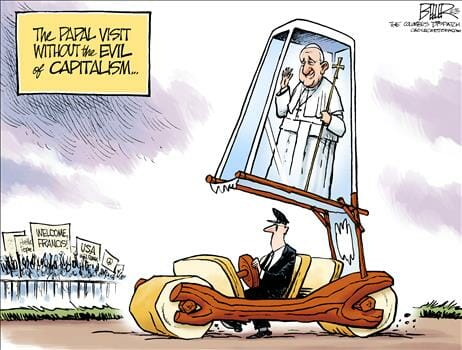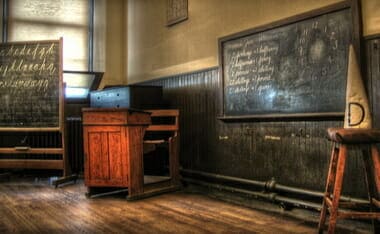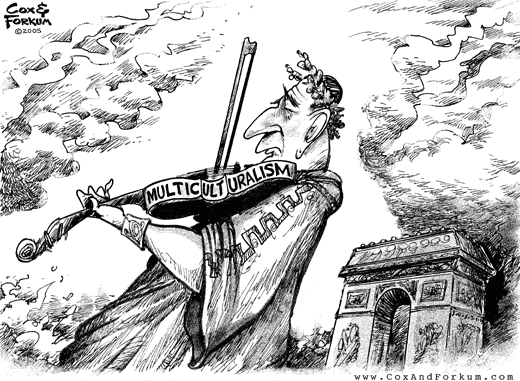BOOM! Are the police racist? Do they disproportionately shoot African-Americans? Are incidents in places like Ferguson and Baltimore evidence of systemic discrimination? Heather Mac Donald, a scholar at the Manhattan Institute, explains.
Heather Mac Donald


Are the Police Racist?
Are the police racist? Do they disproportionately shoot African-Americans? Are incidents in places like Ferguson and Baltimore evidence of systemic discrimination? Heather Mac Donald, a scholar at the Manhattan Institute, explains.
- See also my upload via Jason Riley interviewing Heather Mac Donald

Black Prison Population and the War on Drugs ~ Heather Mac Donald
Jason Riley (http://tinyurl.com/z25my2p) asks Heather Mac Donald (http://tinyurl.com/zo4n4ek) a question in regards to the War on Drugs and black men’s prison populations. (Larry Elder in on vacation and Jason Riley is filling in.)
Follow Jason on Twitter: https://twitter.com/jasonrileywsj

The THREE BIG LIES of 2015

Gay Patriot lists the three BIG LIES he thinks was most pushed by the media establishment and most referenced by Democrats and their lackeys. The entire article should be read, but here are the three (with some YouTube additions):
- …In 2015, the Democratic Party and its Media Operation collaborated on an unprecdented scale to advance a number of Big Lies in order to advance a sweeping socio-political agenda. Just to name a few:
ONE: The Big Lie of ‘Rape Culture’ – In order to advance the Feminist Transformation, there was a huge push to advance a Narrative that all universities and colleges were essentially Rape Zones where privileged white males raped women at will with no consequences. This lie was advanced by Rolling Stone’s discredited Virginia Tech Gang Rape story, by the completely discredited claim that 1 in 5 college women are raped, and by lying drama queens like Emma “Mattress Girl” Sulkowicz and Lena Dunham. The left advanced this Big Lie in order to advance a comprehensive feminist indoctrination agenda beginning in kindergarten, to shut down criticisms of the radical feminist agenda, and, of course, to label political opponents of the radical feminist agenda as anti-woman. Also, the Rape Culture myth requires universities to create phony-baloney jobs for otherwise unemployable ‘Womyn’s Studies’ majors.
Here the Factual Feminist (one of my favorite authors on feminism) wieghs in:
Dennis Prager reads from Heather Mac Donald’s article in from The City Journal about the “rape culture.” As usual, the left over-exaggerates… and what parent would put their daughter in AP classes to prepare them for the worse crime wave in human history, which is: one-in-five women are rapped at college. OBVIOUSLY the definition is the issue.
As society gets further away from Judeo-Christian norms… more-and-more regret will rear its head from drunken hook-ups.
TWO: Another Big Lie that dominated the culture was the narrative of ‘Racist Cops Gunning Down Innocent Black Men with Impunity.’ This is a useful Big Lie to an administration that seeks to radically alter American society. It advances the myth that the only reason some people don’t achieve as much as other people is because of racism, and the only way to solve that problem is for a massive, all-powerful Government to redistribute wealth from those who have it to those who have been denied it because of racism. This Big Lie was promulgated through the ‘Hands Up, Don’t Shoot’ myth after the shooting of violent, drug-addled thug Michael Brown and fueled the rise of the violent hate group ‘Black Lives Matter.’ It also allows racial con artists like Shaun King, Ta-Nehisi Coates and DeRay McKesson to become rich.
In pursuit of the leftist agenda to prohibit the private ownership of firearms, the Democrat Media Complex (DMC) has promulgated a mythology worthy of the Church of Scientology. The anti-gun left falsely claimed that mass shootings were a daily occurrence in the USA. Democrat politicians at the highest level repeat the discredited myths such as that gun manufacturers are uniquely immune from liability laws or that 40% of gun sales occur without a background check. The policies intended to be advanced by this mythology have nothing to do with stopping the criminal use of firearms, and everything to do with inhibiting the lawful ownership of firearms by law-abiding citizens. The Democrat Party has rallied to the cause of suspending Due Process and using a secret Government List to deny citizens the Right to Self-Defense, along with other laws that have repeatedly been shown to have no effect on the criminal abuse of firearms.
A magic 50-minutes with Larry Elder. He weaves the reality that the Left can only weave — and that is this:
- the bankruptcy of and the consequences of the “state” [statist ideology] that came to fruition in Ferguson in the micro via the MACRO application of failed leftist policies! (e.g., the welfare state, subsidizing fatherless-ness, and the funding of programs and pensions via unions and it’s city/state employees.

THREE: And, of course, there is the Mother of All Big Lies: Global Warming Caused by Capitalism Is Going to Burn Up the Whole World Unless Liberty and Free Markets Are Subjugated Under Global Totalitarian Socialism….
This third lie is fleshed out well in this article at WUWT, “There Is No Climate Change Disaster Except The One Governments Created.”

Political Correctness Devastates UCLA ~ Who Killed the Liberal Arts?
What in the world happened to the liberal arts? A degree in the humanities used to transmit the knowledge and wisdom imbued in the works of great Western artists, writers, musicians and thinkers like Shakespeare and Mozart. But today, that same degree stresses Western racism, sexism, imperialism, and other ills and sins that reinforce a sense of victimhood and narcissism. So, what happened? Heather Mac Donald of the Manhattan Institute explains.
UCLA now is about as worthwhile as a local community college. You no longer go to these institutions to learn about great ideas, but now must listen to the static of EVERYTHING being made equally great by the magic wand of the left. Dennis Prager read from — and commented on — Heather Mac Donald’s Wall Street Journal article about UCLA nixing classical studies as mandatory for English lit majors. Here is some of that article as read above:
The Humanities Have Forgotten Their Humanity
When Shakespeare lost out to ‘rubrics of gender, sexuality, race, and class’ at UCLA, something vital was harmed.
Until 2011, students majoring in English at UCLA had to take one course in Chaucer, two in Shakespeare, and one in Milton—the cornerstones of English literature. Following a revolt of the junior faculty, however, during which it was announced that Shakespeare was part of the “Empire,” UCLA junked these individual author requirements. It replaced them with a mandate that all English majors take a total of three courses in the following four areas: Gender, Race, Ethnicity, Disability and Sexuality Studies; Imperial, Transnational, and Postcolonial Studies; genre studies, interdisciplinary studies, and critical theory; or creative writing.
In other words, the UCLA faculty was now officially indifferent to whether an English major had ever read a word of Chaucer, Milton or Shakespeare, but the department was determined to expose students, according to the course catalog, to “alternative rubrics of gender, sexuality, race, and class.”
Such defenestrations have happened elsewhere, and long before 2011. But the UCLA coup was particularly significant because the school’s English department was one of the last champions of the historically informed study of great literature, uncorrupted by an ideological overlay. Precisely for that reason, it was the most popular English major in the country, enrolling a whopping 1,400 undergraduates.
The UCLA coup represents the characteristic academic traits of our time: narcissism, an obsession with victimhood, and a relentless determination to reduce the stunning complexity of the past to the shallow categories of identity and class politics. Sitting atop an entire civilization of aesthetic wonders, the contemporary academic wants only to study oppression, preferably his or her own, defined reductively according to gonads and melanin.
Course catalogs today babble monotonously of group identity. UCLA’s undergraduates can take courses in Women of Color in the U.S.; Women and Gender in the Caribbean; Chicana Feminism; Studies in Queer Literatures and Cultures; and Feminist and Queer Theory.
[….]
Compare the humanists’ hunger for learning with the resentment of a Columbia University undergraduate, who had been required by the school’s core curriculum to study Mozart. She happens to be black, but her views are widely shared, to borrow a phrase, “across gender, sexuality, race and class.”
“Why did I have to listen in music humanities to this Mozart?” she groused in a discussion of the curriculum reported by David Denby in “Great Books,” his 1997 account of re-enrolling in Columbia’s core curriculum. “My problem with the core is that it upholds the premises of white supremacy and racism. It’s a racist core. Who is this Mozart, this Haydn, these superior white men? There are no women, no people of color.” These are not the idiosyncratic thoughts of one disgruntled student; they represent the dominant ideology in the humanities today.
W.E.B. Du Bois would have been stunned to learn how narrow is the contemporary multiculturalist’s self-definition and sphere of interest. Du Bois, living during America’s darkest period of hate, nevertheless heartbreakingly affirmed in 1903 his intellectual and spiritual affinity with all of Western civilization: “I sit with Shakespeare and he winces not. Across the color line I move arm in arm with Balzac and Dumas. . . . I summon Aristotle and Aurelius and what soul I will, and they come all graciously with no scorn nor condescension.”
It is no wonder, then, that we have been hearing of late that the humanities are in crisis. A recent Harvard report from a committee co-chaired by the school’s premier postcolonial studies theorist, Homi Bhabha, lamented that 57% of incoming Harvard students who initially declare interest in a humanities major eventually change concentrations. Why may that be? Imagine an intending lit major who is assigned something by Professor Bhabha: “If the problematic ‘closure’ of textuality questions the totalization of national culture. . . .” How soon before that student concludes that a psychology major is more up his alley?
No, the only true justification for the humanities is that they provide the thing that Faust sold his soul for: knowledge. It is knowledge of a particular kind, concerning what men have done and created over the ages.

What is the University Diversity Scam? (Heather Mac Donald)
America’s campuses, particularly those in California, spend tens of millions of dollars on administrators and programs to combat issues like sexism, homophobia, and racism on campus. But are these problems in any way prevalent at our universities? Or is this diversity bureaucracy a big waste of money? Heather Mac Donald of the Manhattan Institute explains.

The “Rape Culture” Myth (George Will and Heather Mac Donald)
Lies of the Left
Dennis Prager reads from Heather Mac Donald’s article in from The City Journal about the “rape culture.” As usual, the left over-exaggerates… and what parent would put their daughter in AP classes to prepare them for the worse crime wave in human history, which is: one-in-five women are rapped at college. OBVIOUSLY the definition is the issue.
As society gets further away from Judeo-Christian norms… more-and-more regret will rear its head from drunken hook-ups.
For more clear thinking like this from Dennis Prager… I invite you to visit: http://www.dennisprager.com/
A great back-and-forth between George Will and some Democrat Senators who — as HotAir points out in George’s response to their asinine letter, these “Senators were likely faced with the difficult task of flipping back and forth to dictionary.com to translate Will’s writing, so we should probably have some sympathy.” HotAir continues:
- For the entire time I have been writing I have cited George Will as one of the top five wordsmiths of our generation. Whether you agree with him or not… whether you think he leans too far in one philosophical direction or the other… there is no denying that Will is a master of the English language and flexes it like Mr. Olympia in the final pose-off.
Here is more from HotAir on the fun tiff:
In case you missed the origins of this story earlier in the week, George Will took to his usual platform at the Washington Post with some words of caution regarding federal government intervention regarding sexual assaults on the nation’s college campuses. In it, he attempted to inject corrective remedies into some of the hyperbole currently engulfing the topic. Of course, in his usual fashion, Will led off with a paragraph which seemed designed to poke a stick in a few wasp nests.
Colleges and universities are being educated by Washington and are finding the experience excruciating. They are learning that when they say campus victimizations are ubiquitous (“micro-aggressions,” often not discernible to the untutored eye, are everywhere), and that when they make victimhood a coveted status that confers privileges, victims proliferate. And academia’s progressivism has rendered it intellectually defenseless now that progressivism’s achievement, the regulatory state, has decided it is academia’s turn to be broken to government’s saddle.
A careful reading of Will’s full editorial would show that he was essentially making two points. First, the “math” being cited to define the number of sexual assaults taking place was unfit for a 3rd grade Common Core tutorial. Second, Will noted that expanding and inflating the definition of sexual assaults to include micro-agressions – such as a boy staring for too long at a young coed with a low cut blouse – would tend to dilute the pool of actual assaults and diminish the seriousness of the real problem.
Such a stance brought the usual list of suspects up on their hind legs and into an immediate attack posture. This culminated in a coalition of Democratic Senators (Feinstein, Blumenthal, Tammy Baldwin and Robert Casey) penning a letter to the WaPo, chastising them for allowing Will to breath the same air as the rest of us.
After running their letter and litany of complaints, this weekend the Post ran a rare response from George Will….
Here is a larger portion of George Will’s response from the WASHINGTON POST:
The administration asserts that only 12 percent of college sexual assaults are reported. Note well: I did not question this statistic. Rather, I used it.
I cited one of the calculations based on it that Mark Perry of the American Enterprise Institute has performed {link}. So, I think your complaint is with the conclusion that arithmetic dictates, based on the administration’s statistic. The inescapable conclusion is that another administration statistic that one in five women is sexually assaulted while in college is insupportable and might call for tempering your rhetoric about “the scourge of sexual assault.”
As for what you call my “ancient beliefs,” which you think derive from an “antiquated” and “counterintuitive” culture, allow me to tell you something really counterintuitive: I think I take sexual assault much more seriously than you do. Which is why I worry about definitions of that category of crime that might, by their breadth, tend to trivialize it. And why I think sexual assault is a felony that should be dealt with by the criminal justice system, and not be adjudicated by improvised campus processes.
Read the senators’ letter here, and Will’s response in full here.

After laying out a detailed case of what by Julia Pollak experienced in the military as a woman, she goes on to compare this experinece to her experience at Harvard. A MUST read, great article! I pick up as she enters the comparison: 
…Compare all this to the model for sexual assault prevention and response at the institution I belonged to before the military—Harvard College. There, complaints of sexual assault are filed with the Administrative Board, or “Ad Board,” comprised of deans and faculty members. The written policies regarding sexual assault are far less favorable to victims, requiring non-consent to be expressed “verbally or physically” and requiring the Ad Board members to be “sufficiently persuaded” that an assault occurred.
In stark contrast to the stories I’ve heard about military perpetrators landing up in Leavenworth Prison, Harvard’s history of dealing with sexual assault cases might easily give more encouragement to perpetrators than victims.
During my time at Harvard College, between 2005 and 2009, I had one friend who was sexually assaulted by a fellow student, another who was beaten by her boyfriend (a fellow student), and another who was involved in a highly improper and abusive relationship with a professor. Not one of these incidents was ever reported.
In the five years from 2005 to 2010, according to the Harvard Crimson, eight cases of sexual misconduct were brought before Harvard’s Ad Board. Only three perpetrators were required to withdraw from Harvard College for at least six months, and none received a permanent expulsion.
So perhaps, instead of being a punching bag on Capitol Hill, the military should be studied as a model for sexual assault awareness, prevention, and response policy, especially among young people aged 18 to 24.
To place the military’s sexual assault problem in a wider context, here are some illustrative numbers. According to an anonymous survey, service members may have experienced as many as 26,000 instances of “unwanted sexual contact” in 2012. In other words, about 6.1% of female service members and 1.2% of male service members experienced unwanted sexual contact that year. Note that this number includes a substantial number of cases that occurred before the victim entered the military, as well as cases involving civilian perpetrators.
Although it is difficult to make direct comparisons due to differences in the way survey questions are asked, rates of sexual assault outside the military appear to be similar—if not higher. A 2010 study by the Centers for Disease Control (CDC) found that 6.7% of all women had experienced sexual violence, rape, or attempted rape in the 12-month period preceding the study. Since sexual assault rates are highest among the young, the CDC finding implies that the incidence of sexual assault is even higher than 6.7% among military-aged women. The CDC also found that between 20 and 25 percent of women, and approximately 6.1 percent of men, are victims of an attempted or completed sexual assault while they are in college.
And perhaps that model should be exported to the nation’s college campuses, where sexual assault is equally prevalent but far more hidden; where sexual assault policies and practices are outdated; and where the fear of litigation or falling rankings makes university administrations reluctant to expel offenders and eager to brush the problem under the carpet.
The Beholden State: Reclaiming California’s Lost Promise
California is at a tipping point. Severe budget deficits, unsustainable pension costs, heavy taxes, cumbersome regulation, struggling cities, and distressed public schools are but a few of the challenges that policymakers must address for the state to remain a beacon of business innovation and economic opportunity. In this video, the cracks in California’s flawed policy plans are displayed and analyzed by a diverse set of experts in the state’s design.
Buy the book on Amazon

Heather Mac Donald Writes an Exploratory Surgery on California`s UC System (Excerpt)
….The first University of California campus opened in Berkeley in 1873, fulfilling a mandate of California’s 1849 constitution that the state establish a public university for the “promotion of literature, the arts and sciences.” Expectations for this new endeavor were high; Governor Henry Haight had predicted that the campus would “soon become a great light-house of education and learning on this Coast, and a pride and glory” of the state.
He was right. Over the next 140 years, as nine more campuses were added, the university would prove an engine for economic growth and a source of human progress. UC owns more research patents than any other university system in the country. Its engineers helped achieve California’s midcentury dominance in aerospace and electronics; its agronomists aided the state’s fecund farms and vineyards. The nuclear technology developed by UC scientists and their students secured America’s Cold War preeminence (while provoking one of the country’s most cataclysmic student protest movements). UC’s physical infrastructure is a precious asset in its own right. Anyone can wander its trellised gardens and groves of native and exotic trees, or browse its library stacks and superb research collections.
But by the early 1960s, UC was already exhibiting many of the problems that afflict it today. The bureaucracy had mushroomed, both at the flagship Berkeley campus and at the Office of the President, the central administrative unit that oversees the entire UC system. Nathan Glazer, who taught sociology at Berkeley at the time, wrote in Commentary in 1965: “Everyone—arriving faculty members, arriving deans, visiting authorities—is astonished by the size” of the two administrations. Glazer noted the emergence of a new professional class: full-time college administrators who specialized in student affairs, had never taught, and had little contact with the faculty. The result of this bureaucratic explosion reminded Glazer of the federal government: “Organization piled upon organization, reaching to a mysterious empyrean height.”
At Berkeley, as federal research money flooded into the campus, the faculty were losing interest in undergraduate teaching, observed Clark Kerr, UC’s president and a former Berkeley chancellor. (Kerr once famously quipped that a chancellor’s job was to provide “parking for the faculty, sex for the students, and athletics for the alumni.”) Back in the 1930s, responsibility for introductory freshman courses had been the highest honor that a Berkeley professor could receive, Kerr wrote in his memoirs; 30 years later, the faculty shunted off such obligations whenever possible to teaching assistants, who, by 1964, made up nearly half the Berkeley teaching corps.
Most presciently, Kerr noted that Berkeley had split into two parts: Berkeley One, an important academic institution with a continuous lineage back to the nineteenth century; and Berkeley Two, a recent political upstart centered on the antiwar, antiauthority Free Speech Movement that had occupied Sproul Plaza in 1964. Berkeley Two was as connected to the city’s left-wing political class and to its growing colony of “street people” as it was to the traditional academic life of the campus. In fact, the two Berkeleys had few points of overlap.
Today, echoing Kerr, we can say that there are two Universities of California: UC One, a serious university system centered on the sciences (though with representatives throughout the disciplines) and still characterized by rigorous meritocratic standards; and UC Two, a profoundly unserious institution dedicated to the all-consuming crusade against phantom racism and sexism that goes by the name of “diversity.” Unlike Berkeley Two in Kerr’s Day, UC Two reaches to the topmost echelon of the university, where it poses a real threat to the integrity of its high-achieving counterpart….
[….]
….Yet when UC Two’s administrators and professors look around their domains, they see a landscape riven by the discrimination that it is their duty to extirpate.
Thus it was that UC San Diego’s electrical and computer engineering department found itself facing a mandate from campus administrators to hire a fourth female professor in early 2012. The possibility of a new hire had opened up—a rare opportunity in the current budget climate—and after winnowing down hundreds of applicants, the department put forward its top candidates for on-campus interviews. Scandalously, all were male. Word came down from on high that a female applicant who hadn’t even been close to making the initial cut must be interviewed. She was duly brought to campus for an interview, but she got mediocre reviews. The powers-that-be then spoke again: her candidacy must be brought to a departmental vote. In an unprecedented assertion of secrecy, the department chair refused to disclose the vote’s outcome and insisted on a second ballot. After that second vote, the authorities finally gave up and dropped her candidacy. Both vote counts remain secret.
An electrical and computer engineering professor explains what was at stake. “We pride ourselves on being the best,” he says. “The faculty know that absolute ranking is critical. No one had ever considered this woman a star.” You would think that UC’s administrators would value this fierce desire for excellence, especially in a time of limited resources. Thanks to its commitment to hiring only “the best,” San Diego’s electrical and computer engineering department has made leading contributions to circuit design, digital coding, and information theory.
Maria Sobek, UC Santa Barbara’s associate vice chancellor for diversity, equity, and academic policy and a professor of Chicana and Chicano studies, provides a window into how UC Two thinks about its mission. If a faculty hiring committee selects only white male finalists for an opening, the dean will suggest “bringing in some women to look them over,” Sobek says. These female candidates, she says, “may be borderline, but they are all qualified.” And voilà! “It turns out [the hiring committees] really like the candidates and hire them, even if they may not have looked so good on paper.” This process has “energized” the faculty to hire a woman, says Sobek. She adds that diversity interventions get “more positive responses” from humanities and social-sciences professors than from scientists.
Leave aside Sobek’s amusing suggestion that the faculty just happen to discover that they “really like” the diversity candidate whom the administration has forced on them. More disturbing is the subversion of the usual hiring standard from “most qualified” to “qualified enough.” UC Two sets the hiring bar low enough to scoop in some female or minority candidates, and then declares that anyone above that bar is “qualified enough” to trump the most qualified candidate, if that candidate is a white or an Asian male. This is a formula for mediocrity.
Sometimes, UC Two can’t manage to lower hiring standards enough to scoop in a “diverse” candidate. In that case, it simply creates a special hiring category outside the normal channels. In September 2012, after the meritocratic revolt in UC San Diego’s electrical and computer engineering department, the engineering school announced that it would hire an “excellence” candidate, the school’s Orwellian term for faculty who, it claims, will contribute to diversity and who, by some odd coincidence, always happen to be female or an underrepresented minority. UC San Diego’s Division of Physical Sciences followed suit the next month, listing two tenure-track positions for professors who could “shape and expand the University’s diversity initiatives.” If the division had any specific scientific expertise in mind, the job listing made no mention of it….
….The UC undergraduates whom I met in 2012 were serious, self-directed, and mature. But they are ill-served by a system that devotes so many resources to political trivia. UC Two’s diversity obsessions have no place in an institution dedicated to the development of knowledge. No one today asks whether the Berkeley physics laboratory that developed the cyclotron had a sufficient quota of women and underrepresented minorities; the beneficiaries of nuclear medicine are simply happy to be treated.
The retirement of President Yudof in summer 2013 provides an opportunity for an overdue course correction. Unfortunately, it is doubtful that anyone will seize it. Every potential countervailing force to UC Two has already been captured by UC Two’s own ideology. The California legislature is as strong an advocate for specious social-justice crusades as any vice chancellor for equity and inclusion. The regents have been unanimous cheerleaders for “diversity” and will run all presidential candidates through a predictable gauntlet of diversity interrogation. For more than a decade, the federal government has used its grant-making power to demand color- and gender-driven hiring in the sciences. UC One’s passion for discovery and learning will fuel it for a long time yet, but it will continue to be weakened severely by UC Two.
- 2 of 2
- « Previous
- 1
- 2
 Multiculti U
Multiculti U
